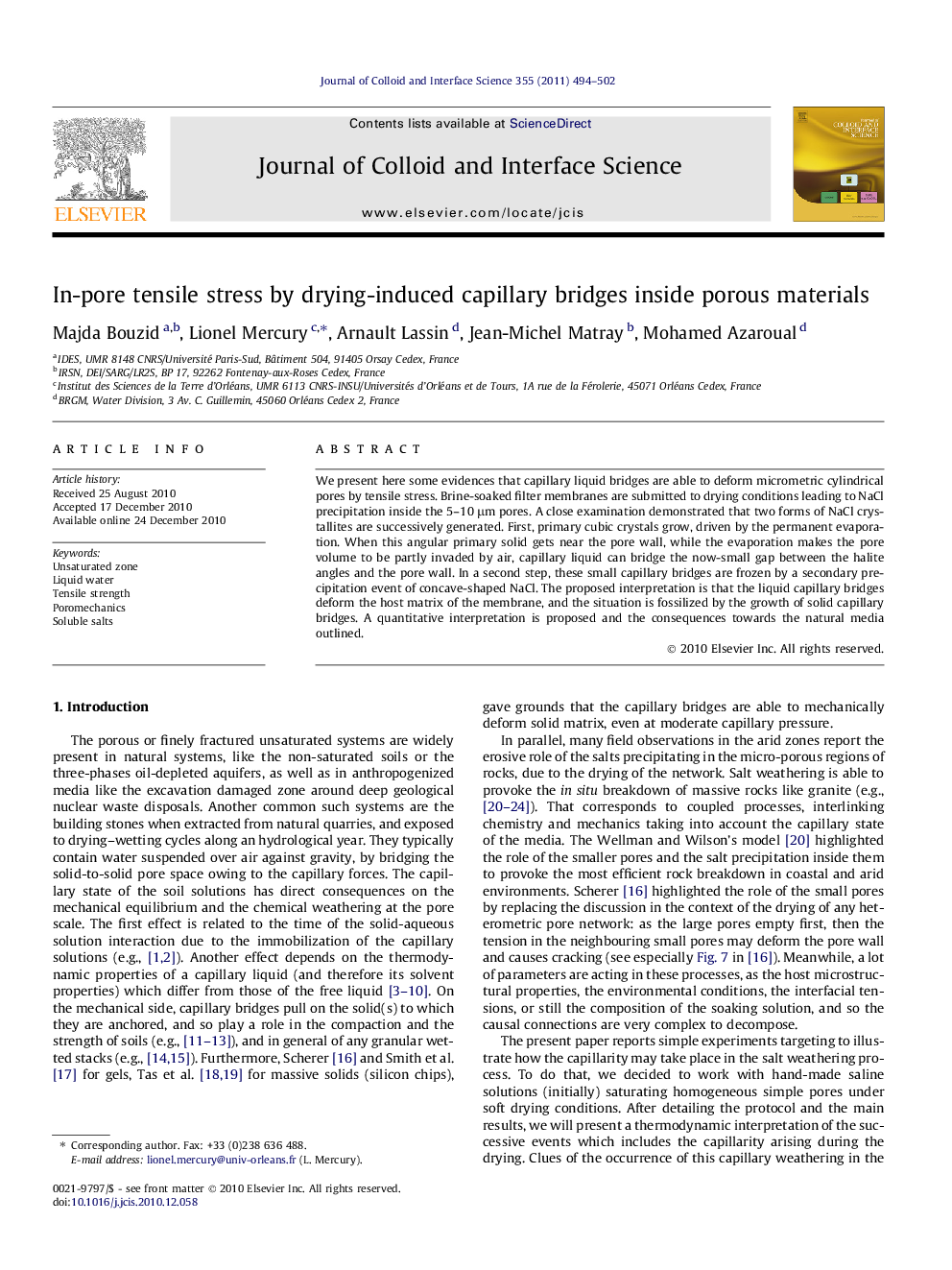| Article ID | Journal | Published Year | Pages | File Type |
|---|---|---|---|---|
| 609085 | Journal of Colloid and Interface Science | 2011 | 9 Pages |
We present here some evidences that capillary liquid bridges are able to deform micrometric cylindrical pores by tensile stress. Brine-soaked filter membranes are submitted to drying conditions leading to NaCl precipitation inside the 5–10 μm pores. A close examination demonstrated that two forms of NaCl crystallites are successively generated. First, primary cubic crystals grow, driven by the permanent evaporation. When this angular primary solid gets near the pore wall, while the evaporation makes the pore volume to be partly invaded by air, capillary liquid can bridge the now-small gap between the halite angles and the pore wall. In a second step, these small capillary bridges are frozen by a secondary precipitation event of concave-shaped NaCl. The proposed interpretation is that the liquid capillary bridges deform the host matrix of the membrane, and the situation is fossilized by the growth of solid capillary bridges. A quantitative interpretation is proposed and the consequences towards the natural media outlined.
Graphical abstractThe paper describes a mechanico-chemical coupling in a porous material. The sampled pore is deformed after hosting a NaCl precipitate, by a pulling action emanating from the salt-wall capillary bridges.Figure optionsDownload full-size imageDownload high-quality image (40 K)Download as PowerPoint slideResearch highlights► Salt precipitation in initially homogeneous pores changes their topology. ► The capillary aqueous solution interacts differently with the solids than the bulk. ► Capillary bridges are able to deform the host solid.
